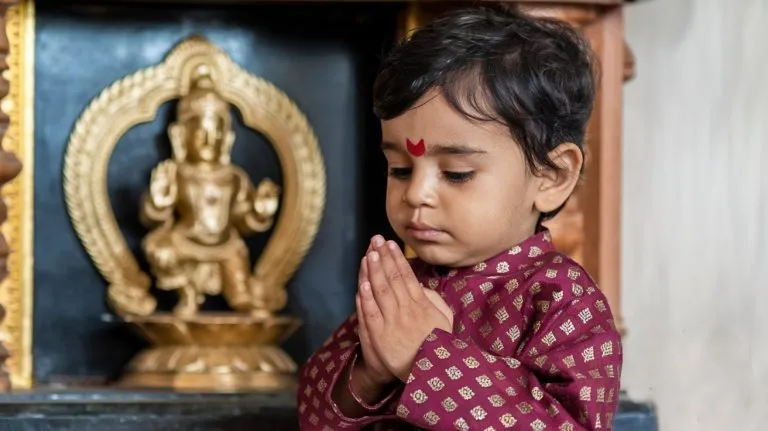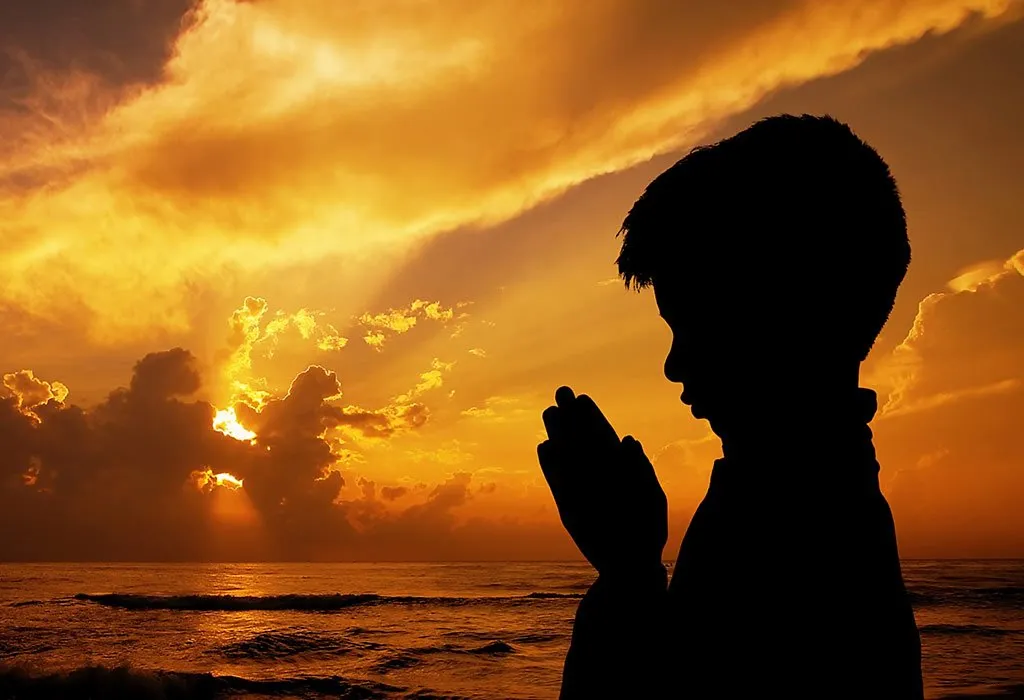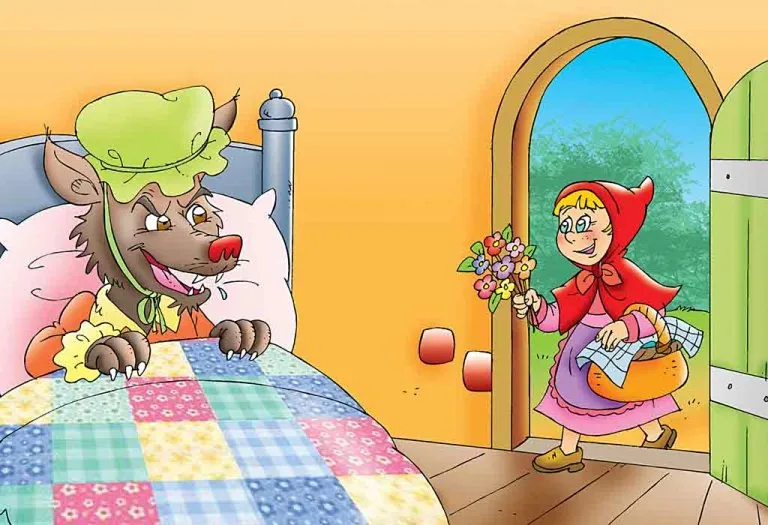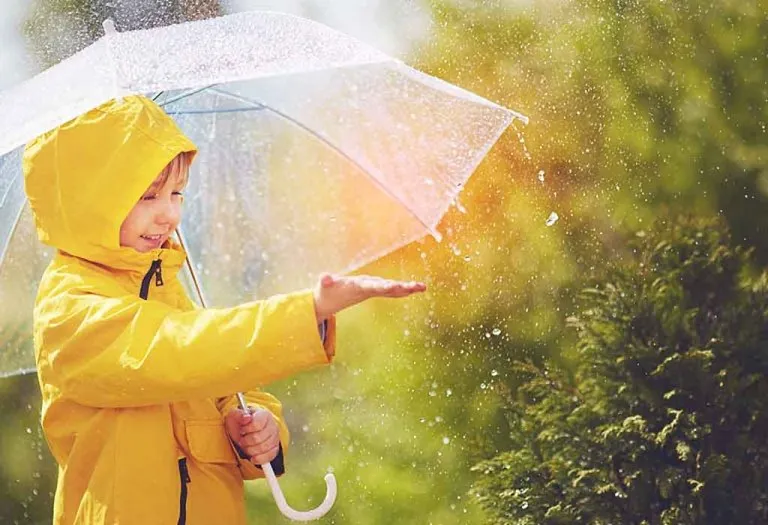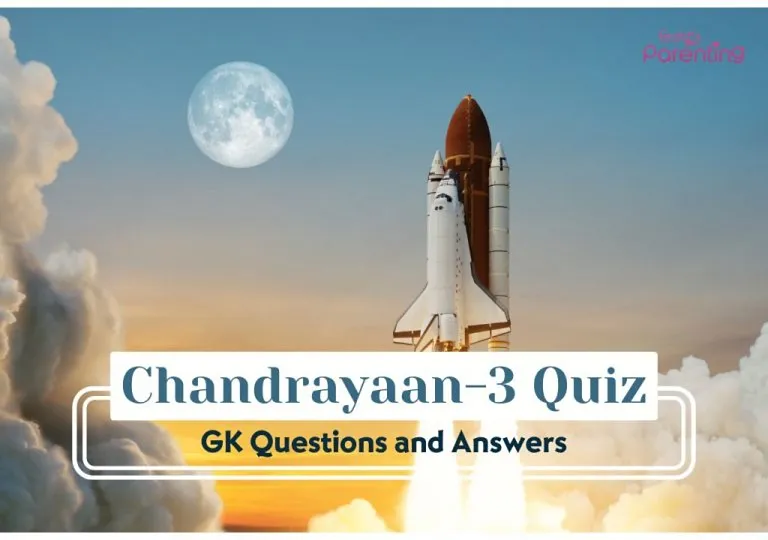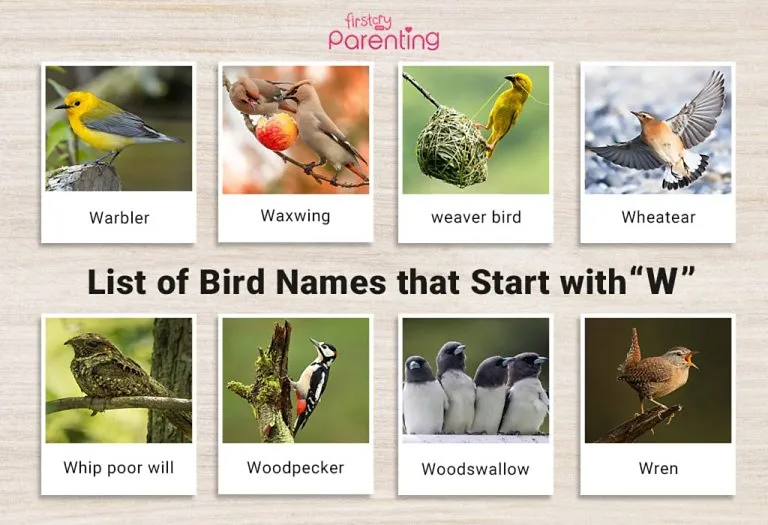20+ Slokas for Kids to Learn and Recite
Chanting of slokas has been prevalent in Indian culture for hundreds of centuries. It is the recitation of words that have spiritual meaning. The soothing words in slokas create a positive environment and help us calm down, releasing our stress and anxiety. Introducing kids to slokas can improve their concentration and help them focus. Reciting slokas is a good habit that children must learn; therefore, parents should teach it right from childhood. Let’s read some easy slokas for kids below, but before that, let’s take a look at Sanskrit slokas for kids with meanings.
What Are Slokas?
Slokas are Sanskrit verse, proverb, hymn or poem that uses a specific meter. Slokas are considered to be the basis for epic Indian poetry, as their use is widespread in traditional Sanskrit poems. “Ramayana” and “Mahabharata” are famous texts written entirely in slokas.
Why Are Slokas Beneficial for Kids?
Chanting slokas positively affects the cognitive functioning of the brain. Their other benefits are:
1. Improve Concentration and Memory
Studies have shown that chanting slokas helps to improve concentration and memory power in children. That’s because slokas emit vibrations that activate the chakras (on the face and head) that play a role in learning and focus.
2. Reduce Stress
Chanting shlokas also reduces stress and improves the portions of the brain that develop the traits of patience and empathy.
3. Keep the Respiratory System Healthy
When kids chant slokas, their breathing slows down. They’re able to take deep breaths and hold it for a few seconds. This regulates the functioning of the lungs and keeps the heart healthy.
4. Improve Your Child’s Immunity
Certain mantras put pressure on your child’s tongue, vocal cords, lips and other connected organs. The vibration also stimulates the hypothalamus gland, which regulates the secretion of hormones and improves immunity.
5. Help to Align the Chakras
Each of us has seven chakras, which are responsible for our health and well-being. If they’re out of equilibrium, we tend to fall sick more often. Chanting slokas can help to align your child’s chakras and prevent him from infections.
6. Give a Boost to the Blood Flow
Regular recitation of slokas gives a boost to your child’s blood circulation and gets rid of the toxins.
Also Read: Good Manners to Teach Your Kids
Slokas for Children With Meanings
Here are 20 Sanskrit slokas for kids (with meanings) that your children can easily memorise and chant.
1. Shanti Mantra
This is the first Shanti mantra; it’s a good sloka for kids. It’s meaningful and also easy to chant. The Shanti Mantra is a prayer of peace from the Upanishads.
Sloka
Asatoma sad gamaya
Tamaso ma jyotir gamaya
Mrityor ma amritam gamaya
Om shanti, shanti, shanti hi
Meaning: Lead me to truth from ignorance, lead me to light from the darkness, lead me to immortality from death. Let there be peace.
2. Shanti Mantra
This is the second Shanti mantra.
Sloka
Om sahana vavatu sahanau bhunaktu
Sahaveeryam karavavahai
Tejas vinavati tamastu ma vidhwishavahai
Om shanti shanti shanti hi
Meaning: May God protect us both, the teacher and the student, on our journey towards attaining knowledge. May He nourish us. May we work together with great energy. May our studies be enlightening and brilliant. May there be no hate or hostility among us. Let there be peace in me, in nature, and in the divine force.
3. Shanti Mantra
This is the third of the four Shanti mantras.
Sloka
Om sarveshaam swastir bhavatu
Sarveshaam shantir bhavatu
Sarveshaam poornam bhavatu
Sarveshaam mangalam bhavatu
Sarve bhavantu sukhinah
Sarve santu niraamayaah
Sarve bhadraani pashyantu
Maakaschit duhkha bhaag bhavet
Meaning: May auspiciousness, peace, and prosperity be unto all. May everybody be happy and free from disabilities. May all strive for the good of others, and none suffer from sorrow.
4. Shanti Mantra
This is the fourth Shanti mantra that kids can chant every day.
Sloka
Om poornamadah poornamidam
Poornaat poornamudachyate
Poornasya poornamaadaya
Poornamevaavashishyate
Om shanti, shanti, shanti hi
Meaning: God is the ultimate truth. The absolute rises above the absolute. Even when the absolute is taken away from the absolute, it remains.
5. Mooshika Vaahana Mantra
This mantra is for invoking the blessings of Lord Ganesha, who helps to eliminate obstacles in life.
Sloka
Mooshika vahana modaka hasta
Chamara karna vilambita sootra
Vamana roopa Maheswara putra
Vighna vinayaka paada namaste
Meaning: Salutations to the Lord Ganesha, who has a mouse for a vehicle and a modak in his hand. Your ears are like big fans and you wear a sacred thread. You’re short in stature and the son of Lord Maheshwara (Shiva). I bow to you Lord Ganesha, the remover of all obstacles.
6. Guru Mantra
This mantra highlights the importance of teachers and equates them with the Hindu Trinity of Lord Brahma, Lord Vishnu and Lord Mahesh.
Sloka
Gurur brahmah gurur vishnu
Gurur devo maheshwaraha
Gurur saakshaat param brahmah
Tasmai shree guravey namaha
Meaning: The guru (teacher) is the living representative of the Holy Trinity in Hinduism – Lord Brahma, Lord Vishnu, and Lord Shiva. The teacher is the representative of the Supreme Being. He gives me knowledge and destroys ignorance. I salute such a guru.
7. Saraswathi Namasthubhyam Mantra
This sloka invokes the blessings of the Goddess Saraswati, the Hindu Goddess of learning and wisdom.
Sloka
Saraswati namastubhyam varade kaamaroopini
Vidyaarambham karishhyaami siddhirbhavatu me sadaa
Meaning: Revered Goddess Saraswati, I prostrate before you as you are the one who can fulfil all my wishes. I am beginning my studies and ask you to bestow your grace upon me so that I am successful in my endeavour.
8. Manojavam Mantra
This sloka invokes the blessings of Lord Hanuman.
Sloka
Mano javam maruda thulya vegam
Jithendriyam buddhi maatham varishtam
Vathaatmajam vanara yudha mukhyam
Sree rama dootham charanam prapadhye
Meaning: I take refuge in Lord Hanuman. I pray and salute the one who is as fast as thought, is more powerful than the wind, has mastered his senses, is the wisest, is the son of the Wind God, is the commander of the monkey brigade, and Lord Ram’s messenger. I bow at your feet.
9. Gayatri Mantra
The Gayatri Mantra, also called Savitri Mantra, is a Vedic chant from the Rig Veda. It is dedicated to the sun. Make your child recite it while standing under the early morning sun.
Sloka
Om bhur bhuva swaha
Tat savitur varenyam
Bhargo devasya dhimahi
Dhiyo yo nah prachodayat
Meaning: We meditate on the glory of the vivifying Sun, whose divine light illuminates all realms – the physical, the mental and the spiritual. May your divine light illuminate our intellect.
10. Guravey Sarva Mantra
This is a mantra in praise of the Dakshinamoorthy (Lord Shiva).
Sloka
Guravey sarva lokaanaam
Bishajey bhava rohinaam
Nidhaye sarva vidyanaam
Shree dakshinaa moorthaye namaha
Meaning: We bow to the universal guru who is the teacher of the entire world and the healer of all diseases.
11. Vidyaarthee Sloka
This sloka can be recited while bowing to Lord Ganesha and praying to him to bless you with knowledge, a child, or salvation.
Sloka
Vidyaarthee lapathey vidyaam
Dhanaarthee lapathey dhanam
Puthraarthee lapathey puthraan
Mokshaarthee lapathey gathim
Meaning: Aspire for knowledge, you’ll get it; yearn for wealth, you’ll get it; ask for a child, you’ll get it; strive for salvation, and you’ll reach it.
12. Vakrathunda Sloka
This sloka is about seeking Lord Ganesha’s blessings for removing obstacles in your path to success.
Sloka
Vakrathunda mahaakaaya
Suryakoti samaprabha
Nirvignam kurumey deva
Sarvakaryeshu sarvada
Meaning: Lord with a curved trunk and huge body, and the brilliance of a million suns, I seek your blessings to grace my new beginning and remove all the obstacles as I begin to work.
13. Sarva Kalyaani Mantra
This sloka is a prayer to the Goddess Gauri Narayan for success and prosperity.
Sloka
Sarva mangala mangalye shive sarvaartha saadhike
Sharanye trayambake Gauri Narayani namosthute
Meaning: O Goddess of all auspiciousness, who is so harmonious, the fulfiller of our objectives, the giver of refuge, who has three eyes and is in golden colour, our salutations to you, Gauri Narayani.
14. Hyagreevam Stuthi
Hayagreeva is an incarnation of Lord Vishnu, and kids can recite this sloka before beginning their day.
Sloka
Gyaananandamayam devam
Nirmala spadikakruthim
Aadaram sarva vidyanaam
Hyagreevam upasmahe
Meaning: Salutations to Sri Hayagreeva, the Lord with a Horse face. You are the presiding God for all the knowledge in the world. We offer our prayers to you; please bless us with knowledge and wisdom.
15. Lakshmi Sloka
This sloka is a prayer to seek the blessings of the Goddess Lakshmi, the Goddess of wealth.
Sloka
Namastestu mahamaye
Sripithe sura pujite,
Sankha chakra gada haste
Mahalaksmi namostute
Meaning: Salute to Goddess Lakshmi, who is the “Cause of Creation” and who is worshipped by the Suras. Salute to the Goddess who is adorned with the conch, disc and mace in her hands. I respectfully bow in front of you.
16. Achyutam Keshavam Sloka
This sloka is in praise of Lord Rama and includes his various names.
Sloka
Acyutam Keshavam Raama-Naaraayannam
Krssnna-Daamodaram Vaasudevam Harim
Shrii-Dharam Maadhavam Gopikaa-Vallabham
Jaanakii-Naayakam Raamacamdram Bhaje
Meaning: This verse lauds Lord Ram, who is also known as Achyuta (infallible), Keshav, Raam, Narayan, Krishna, Damodara, Vasudeva, Hari, Shridhara (possessing Lakshmi), Madhava, Gopikavallabha (Dearest of Gopika), and Janakinayaka (Lord of Janaki or Sita).
17. Ya Devi Sarva Bhuteshu Sloka
This sloka is dedicated to the Goddess Durga. You can make your child recite this sloka in the morning before school time.
Sloka
Ya Devi Sarva Bhuteshu Nidra Rupen Samsithaha
Namastasyai Namastasyai Namastasyai Namo Namah
Meaning: You are everywhere, Goddess. You are also present while sleeping. I humbly bow to you. I salute you three times. You are the one who, in the shape of the sleep, is present in all living beings.
18. Yaa Kundendu
Invoke the blessings of Goddess Saraswati, the embodiment of knowledge and wisdom, at the start of your daily lessons.
Sloka
Yaa kundendu tushaarahaara dhavalaa
Yaa shubhra vastraavritaa
Yaa veenaa varadanda manditakaraa
Yaa shveta padmaasanaa
Yaa brahmaachyuta shankara
Prabhritibihi devaih sadaa pujitaa
Saa maam pattu saravatee
Bhagavatee nihshesha jaadyaapahaa
Meaning: Goddess Saraswati shines with a purity resembling moonlight, snow, and pearls, draped in immaculate white. As she skillfully plays the veena with her two hands, she extends blessings with the other two or offers guidance when needed. Seated upon a lovely white lotus, she is revered by all the celestial beings, including Brahma, the creator; Vishnu, the preserver; and Maheshwara, the destroyer. May she clear any hurdles in my path and provide me with her divine protection.
19. Deepam Sloka
This sloka serves as an invocation to the lamp.
Sloka
Shubham karoti kalyaanam
Aarogyam dhana sampadaa
Shatrubudhi vinaashaaya
Diipajyoti namoastute
Meaning: We bow to the light that brings good fortune, prosperity, good health, and abundant wealth while also vanquishing the enemies of our intellect.
20. Sastha Dasakam
This is a devotional prayer dedicated to Lord Ayyappa, the deity of Sabarimala.
Sloka
Mattha mathanga gamanam
Karunyamrutha pooritham
Sarva vigna haram devam
Sastharam pranamamyaham
Meaning: We offer our salutations to Lord Ayyappa, who rides like an elephant, embodies great compassion, and removes obstacles.
How Can You Teach Your Child to Learn Slokas?
Making your child learn slokas help them to maintain calmness. You can begin by explaining the meaning of each verse to your child and then divide each line into two to make it easier for them to memorise the slokas. Encourage children to practice how to pronounce each word of the sloka correctly. Gradually ask them to chant slokas, and they will soon master them through regular practice.
Etiquettes for Sloka While Recitation by Children
Here are some etiquettes that children must follow while reciting slokas.
- Make your child wear clean and tidy clothes after bathing in the morning, and then do begin their sloka practice.
- Set aside a space for your child to do sloka practice. You can make them sit on a chair or a small carpet. Ask them to keep their feet on the carpet while reciting.
- Help your child with the correct pronunciation of the words, as it makes learning easy and better.
- Make it a routine for children to practise reciting slokas and stick to time for sloka practice.
- As you know, repetition is the key to learning something; make your child chant slokas daily.
- Ask your child to maintain the right posture while reciting slokas. Tell them to sit up straight, cross-legged, or on a chair. Bow their head when expressing gratitude while joining hands.
- Make the learning process a fun experience for your child by using books, colourful pictures, audio, and video of the slokas. Reciting slokas with actions and tunes can make it easier for children to get the correct rhythm, pronunciation, and meaning.
Some Sanskrit Slokas Books for Kids
Wish to teach your little one slokas? Here are some books with easy Sanskrit slokas for kids that you can buy.
1. The Little Shloka Book by Priya Subramanian
It’s a perfect book for introduction to Sanskrit slokas for kids. This book is full of colourful illustrations that will attract children to pick up the book and read it.
2. Soulful Shlokas by Rekha Uday Amin
A cheerfully illustrated book with everyday slokas and mantras for children to recite, the book includes the importance and meaning of slokas for children’s easy comprehension.
3. Shlokas and Mantras for Kids by Wonder House Books
A perfect book to introduce your little one to slokas. This book contains simple slokas and mantras with meanings for the children to recite and remember.
FAQs
1. At what age should children start learning slokas?
Children can begin learning slokas as early as 3-5 years old, as their ability to memorize and understand rhythmic patterns develops.
2. How can parents make learning slokas fun for kids?
Parents can make learning slokas enjoyable by incorporating songs, interactive activities, and storytelling techniques, creating a playful environment that encourages participation and enthusiasm.
These were some simple and small slokas for kids. Children can memorise things very quickly, and they only need to listen to a shloka twice or thrice to learn and recite it. It’s believed that the positive effects of slokas on the brain are permanent.
Also Read:
Good Habits for Kids that Each Parents Must Teach
Indian Mythological Stories For Kids With Moral
Pleasing Children’s Morning Prayers
Popular Bedtime Prayers for Kids
Was This Article Helpful?
Parenting is a huge responsibility, for you as a caregiver, but also for us as a parenting content platform. We understand that and take our responsibility of creating credible content seriously. FirstCry Parenting articles are written and published only after extensive research using factually sound references to deliver quality content that is accurate, validated by experts, and completely reliable. To understand how we go about creating content that is credible, read our editorial policy here.





